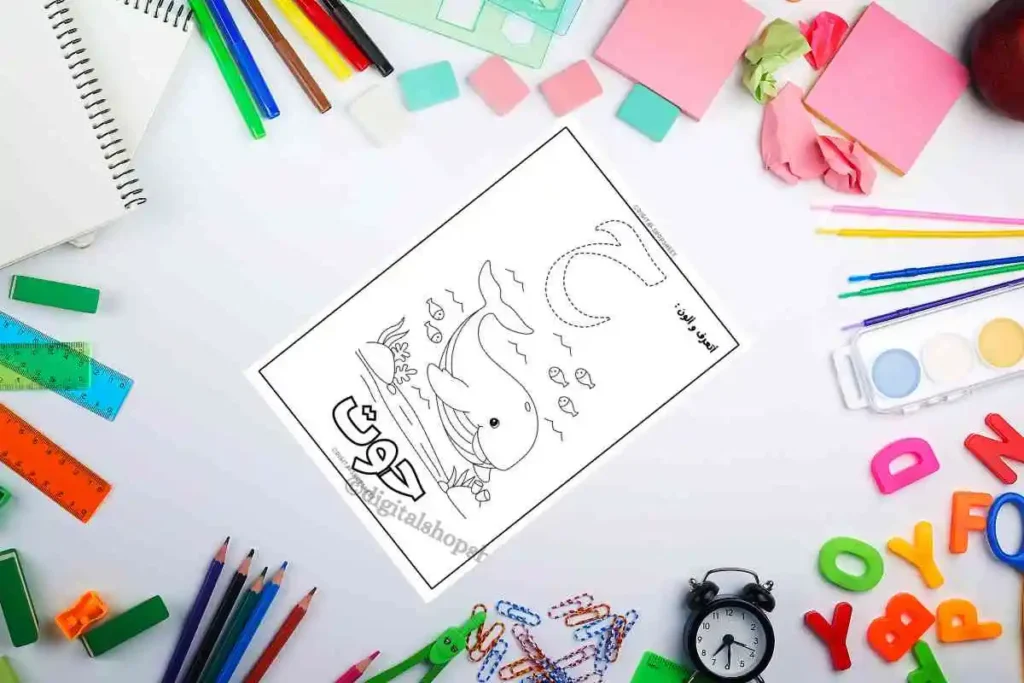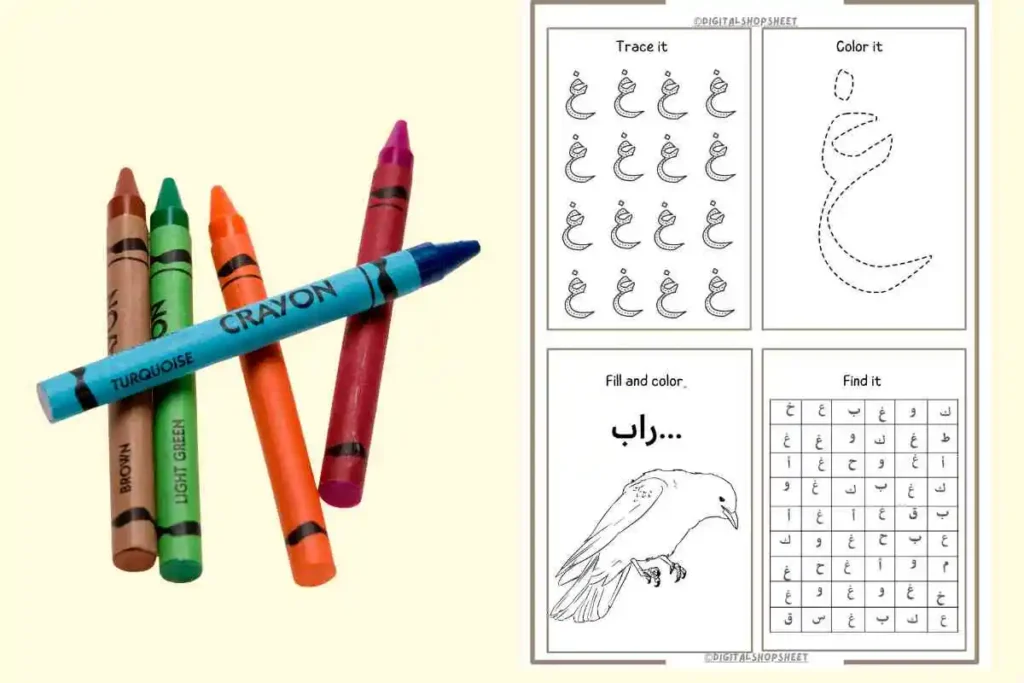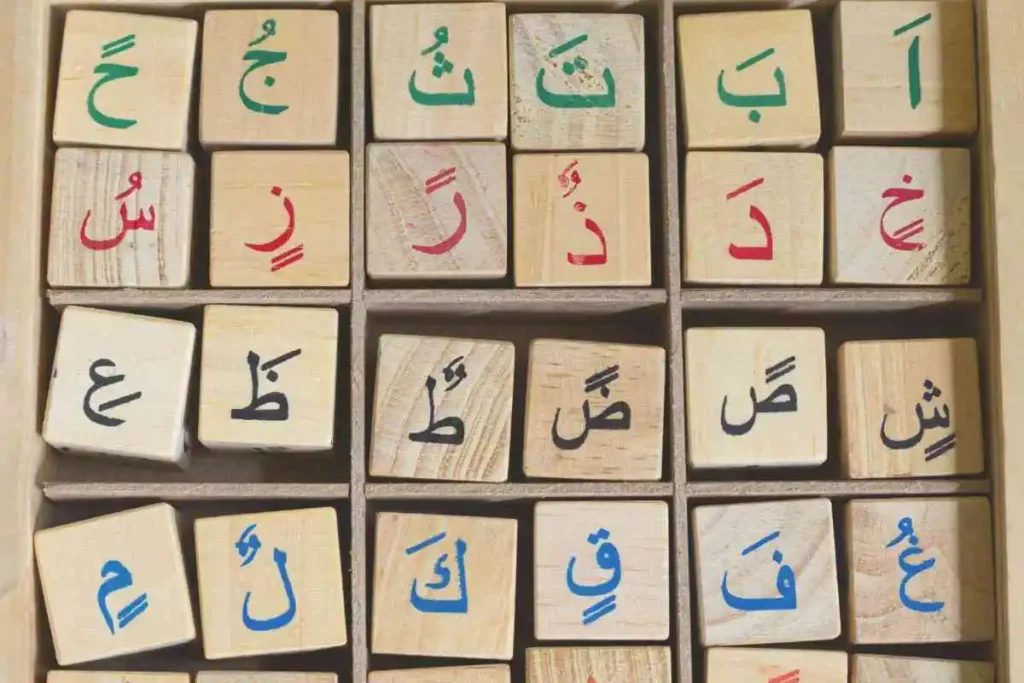
We know that teaching our kids Arabic can be both a joy and a challenge. We want our kids to learn the language, but finding fun ways, especially early, can feel like a puzzle. If you’ve been searching for Arabic activities worksheets that make learning Arabic letters exciting and engaging, you’re in the right place!
In this post, we’ll cover different types of Arabic letter worksheets designed to build familiarity with the Arabic script, fun ways to incorporate Arabic letter writing practice into your child’s routine, and hands-on tools like Arabic letters coloring pages and tracing Arabic letter worksheets. These activities are perfect for early learners and make it easy for you to enjoy learning with your child!
Why Arabic Worksheets Are Great for Kids
Learning Arabic letters early on lays the foundation for building vocabulary, pronunciation, and eventually fluency in reading and writing. Worksheets offer a structured yet creative approach to learning, where kids get to color, trace, and even play games with the letters. It’s no surprise, that hands-on activities like Arabic letter worksheets are so effective—they’re engaging, easy to understand, and create great learning routines.
Essential Arabic Activities Worksheets to Start With
1. Arabic Letters Tracing Sheets
For young learners, tracing Arabic letters is one of the most effective ways to familiarize them with the alphabet. Tracing encourages muscle memory, making it easier for kids to write Arabic letters independently later on. There are printable tracing Arabic letters worksheets that guide your child’s hand to form the letters accurately.
- Why It Works: Tracing introduces shapes and strokes unique to Arabic script while helping improve fine motor skills.
- Related Resource: Check out TeacherPayTeachers for affordable or even free tracing worksheets that are downloadable and printer-friendly. Many resources offer guided tracing with dotted lines, making it easy for young kids to get comfortable with each letter.
2. Arabic Letters Coloring Pages
Coloring is one of the best ways to add fun to learning, and Arabic letter coloring pages make learning playful while engaging kids with colors. These pages often feature Arabic letters with matching illustrations, like “Alif” with a picture of a lion (أسد) or “Ba” with a duck (بطة), to connect letters with words.
- Why It Works: Coloring pages combine creativity with learning and are perfect for reinforcing recognition of each letter’s shape.
- Related Resource: Tpt has some lovely Arabic letter coloring books designed just for kids that make a great addition to your child’s learning materials.
Writing Arabic Letters Practice: Fun and Easy Ideas

1. Guided Arabic Writing Worksheets
With writing Arabic letters practice sheets, your child can move from tracing to independently writing each letter. These worksheets usually offer dotted or lightly printed letters that kids can trace over until they’re confident enough to write them on their own.
- Why It Works: These worksheets help with letter formation, teaching kids the correct order and direction of strokes, which is essential in Arabic.
- Related Resource: TeacherPayTeachers has worksheets for Arabic letter writing practice that let kids work through each letter in a systematic way, preparing them for word formation.
2. Connecting Letters with Arabic Activities Worksheets
As kids become familiar with individual letters, they can move on to worksheets that focus on connecting letters. Arabic letters change forms based on their position in a word (beginning, middle, end), so these worksheets introduce kids to each form and allow them to practice connecting letters in pairs or small words.
- Why It Works: Connecting letters helps kids build familiarity with word structure, building the skills needed for reading and writing sentences.
- Related Resource: Arabic writing workbooks on Amazon provide a full sequence of exercises, from individual letters to connecting forms, making it easy for kids to move step-by-step.
Arabic Letters Worksheet Games to Make Learning Fun
1. Alphabet Bingo with Arabic Letters
Try an Arabic alphabet version of bingo to make letter recognition a game! Create or print a simple Arabic letters worksheet for bingo cards, and use counters to mark each letter as it’s called out. This interactive game is fantastic for playgroups or sibling study sessions.
- Why It Works: Games like bingo make learning competitive, memorable, and enjoyable while reinforcing letter recognition.
- Related Resource: You can find printable Arabic alphabet bingo sheets on TeacherPayTeachers that are ready to go or customize your own at home!
2. Matching Games with Arabic Letters
Matching games are another fun approach, where kids can match uppercase to lowercase forms or letters to corresponding pictures. You can create a DIY matching game by printing out Arabic letter cards or use ready-made ones.
- Why It Works: Matching games are helpful for learning letter forms, connections, and pronunciation. They add a hands-on element to worksheets, making study time feel like play.
- Related Resource: Check Amazon for Arabic letter-matching games, designed for pre-K through elementary ages, which are perfect for introducing letters in an interactive format.
Fun Arabic Learning Activities Beyond Worksheets

1. DIY Playdough Letters
Kids love playdough, so why not turn it into a learning tool? Have your child roll out pieces of playdough and form them into Arabic letters. You can print out a basic Arabic activities worksheet to use as a template, guiding them to mold letters with the dough.
- Why It Works: Playdough is great for developing fine motor skills while making letter shapes memorable and fun.
2. Using Flashcards and Worksheets Together
Pairing flashcards with worksheets is a fantastic way to reinforce learning. Show your child a flashcard, ask them to name the letter, and then let them practice writing it on a worksheet. This exercise connects visual recognition with the action of writing.
- Why It Works: Combining visual and hands-on learning helps reinforce letter recognition and writing skills.
- Related Resource: Arabic letter flashcards on Tpt are easy to use with printable worksheets, especially if you’re teaching the whole alphabet.
Related Articles
Here are five additional articles packed with ideas for creating a fun and effective learning experience for your child:
- Boost Vocabulary Retention with Engaging Arabic Vocabulary Flashcards
- Engaging Kids in Learning with Arabic Number Printables
- Using Arabic Alphabet Tracing Sheets to Boost Your Child’s Writing Skills
Teaching your child Arabic can be an enriching and joyful experience. With a variety of Arabic activities worksheets, fun games, and hands-on activities, you can easily help your little one get comfortable with the Arabic letters. Whether it’s through tracing sheets, coloring pages, or interactive games, you’re building not only their language skills but also a lifelong love for learning. So get ready to dive into these resources, and have fun with your child on this exciting journey!